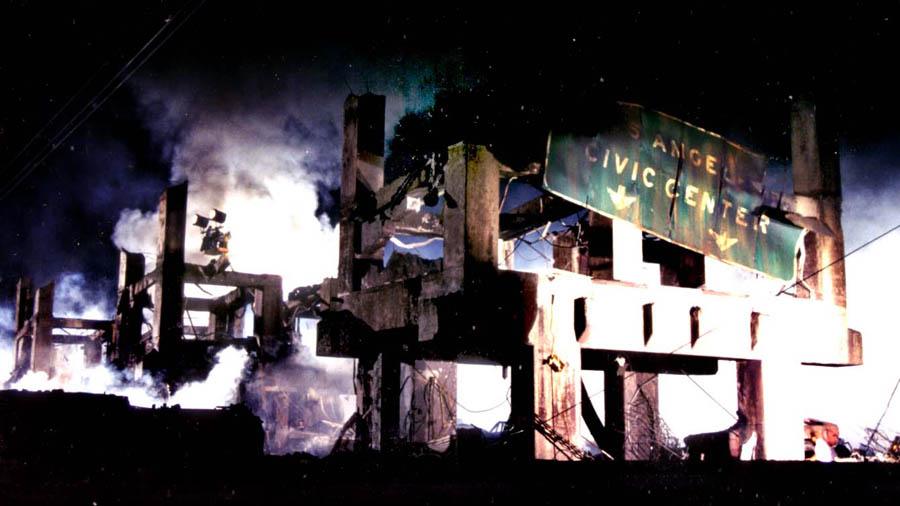John Muto

Then out of the blue, dumb luck, I got a call from the Oingo Boingo people who I’d known slightly in college. They were doing a feature film and they wanted animation and they knew that I was a friend and that I knew something about animation. It just came at a perfect time for me to just cut loose. So I did a piece to just show them what I was thinking about and they were very excited about it. It was for this movie called Forbidden Zone. It was an underground feature directed by one of the Oingo Boingo guys, Richard Elfman. His brother is the composer Danny Elfman. Susan Tyrrell is in it, Joe Spinell is in it. The Kipper kids, Viva, the Andy Warhol Superstar. A lot of these people are still around. And this movie’s been revived in the last few years. They made a great DVD of it, it was in black and white and they colorized it, which I thought was just a total commercial, grasping way to squeeze more pennies out of it. But the colorizing is beautiful. Lovely. It really enhances the film. The posters were done in the 80’s with that kind of punk graphics, skateboard graphics, very garish colors. Which is what I assumed they would do with Forbidden Zone but they did it more with pastels and really sensitive colorations.
AS: The movie combined animation with live action?
JM: It’s a live action picture. In fact the picture was done before they had any animation but they realized they needed it. The animation comes when the action starts to lag a little bit, almost at regular intervals. Some of my stuff sort of pretends to be live action because I do cut-out animation from cut-outs I make of the characters.
AS: Kind of like Monty Python?
JM: Some of it’s very Monty Pythonesque, some of it’s very much like Fleischer Brothers animation. You know- weird, rubbery things. We were working with an animation place in Hollywood. They had worked out what they call a photo-roto process– where you put a lamp into the camera to shine down and you can trace frames. Well they took it a step farther and used photographic paper and used it as an enlarger in a way. And then you had pegged frames that you knew related to the film.
So we did a scene where you fly into this girl’s mouth. She’s screaming and you fly down her throat. And you know I was able to pick up on the camera zoom and match that in the animated zoom. In fact Bob [Boyle] did a very similar gag in one of his movies called Nocturne where you zoom in on this window in LA. Once the window fills the frame it becomes part of the footage filmed on stage. And it matches. Very clever. It’s a matter of measuring things. Taking a 100th inch ruler and measuring and doing it with your brain. Because the computer wasn’t smart enough to do it in those days. It was a wonderful experience.
So we did this picture and it got me to LA and it got me a place to live and made a few bucks. From the animation I wound up going to work for Roger Corman which is a whole other thing. It was great because [James] Cameron worked there in those days. I just worked on these two space movies, Battle Beyond the Stars and Galaxy of Terror.
AS: James Cameron was on Battle Beyond the Stars wasn’t he?
JM: Yeah, he started out as a model maker and wound up basically designing the picture. And then we did a second movie, Galaxy of Terror. It was a sort of “Ten Little Indians in space” kind of movie and Jim was the Second Unit Director and the production designer officially and, except for the fact that it’s not a very good movie, it looks a lot like Aliens and we did it for nothing. There was Jim, there were the Skotak brothers, who you may have heard of. They picked up a couple of Oscars working with Jim. And they are incredibly interesting guys who taught me how to do perspective miniatures and all those kinds of things.
Pingback: Michael Novotny
Pingback: John Myhre